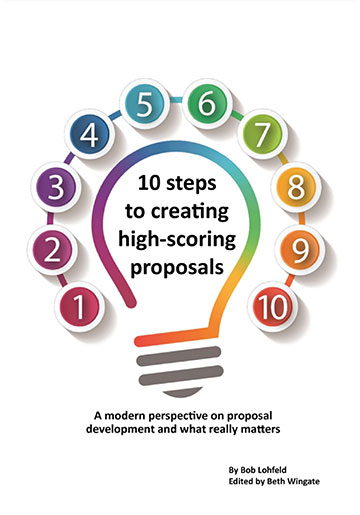How to Survive and Thrive Under FAR Part 6 Changes

This article focuses on changes to FAR Part 6 – Competition Requirements. Here, we identify the opportunities and risks that industry growth teams face as a result of FAR 2.0 acquisition policy changes, and what BD and capture professionals should do to adapt. This is the latest article in a series on the impact of Revolutionary Federal Acquisition Regulation (FAR) Overhaul (RFO) Phase 1 changes on government contractor (GovCon) business development, capture, and proposal programs by Bruce Feldman and Jacob Betram. If you would like more information concerning how to address FAR changes, contact Lohfeld Consulting.
Introduction to FAR 2.0
On May 6, 2025, the Office of Management and Budget (OMB) launched FAR 2.0[1], with the intent of reducing red tape and empowering agencies to increase their focus on buying mission-aligned solutions. These changes are being implemented initially as FAR class deviation guidance, with formal rulemaking planned for late FY25 and beyond.
FAR 2.0 changes the paradigm of the FAR being a comprehensive, regulatory framework by removing non-statutory content and moving guidance to non-binding federal “buyer guides” or agency acquisition playbooks. The FAR 2.0 approach decentralizes acquisition authority, enables mission-first frameworks, and streamlines content. Consequently, industry needs to understand howagencies will change their interpretation and application of competition requirements at the local level.
Why FAR Part 6 Matters
FAR Part 6 implements the Competition in Contracting Act (CICA) of 1984[2]. It ensures full and open competition is the default approach, but allows specific exceptions through well-documented Justification and Approval (J&A) processes. It also provides the rules for set-asides, socioeconomic programs, and sole-source awards.
The FAR 2.0 revisions to FAR Part 6 (and other FAR parts) don’t eliminate competition requirements or statutory obligations. Instead, they streamline content, remove duplication, clarify language, and emphasize accountability, all to help acquiring agencies make and justify better decisions. These changes expect both government and industry to do more work to ensure the correct authority is used—and documented—early in the acquisition process.
Notable changes in FAR Part 6 that affect industry business development and capture teams include the following:
One-Year Limit on Urgency-Based Awards. Awards under Unusual and Compelling Urgency (FAR 6.302-2) are now limited to a maximum of one year, including extensions.
- Plan early for transitions to full and open competition.
- Shape with the client to ensure your solution can bridge or phase to competitive contracts.
- Don’t count on “bridge” justifications that invite increased scrutiny and protest risk for the government.
SBIR and STTR Authorities Codified. FAR 6.102 now explicitly codifies existing Small Business Innovation Research (SBIR) and Small Business Technology Transfer (STTR) authorities in the FAR text. Specifically: (1) Phase I and II are treated as competitive set-asides, and (2) Phase III is authorized for sole-source awards without further competition.
- Recognize that these aren’t new authorities. These changes connect the statutory basis to the FAR so that it’s clearer and easier for contracting officers to justify.
- Use this clarity to shape sole-source Phase III opportunities.
- Be prepared to highlight your SBIR/STTR history in capture and proposals to support eligibility.
“Brand-Name or Equal” Clarification. FAR 6.103-1(d) clarifies that “brand-name or equal” descriptions support full and open competition but re-emphasizes limits on brand-name-only justifications.
- Engage early to ensure your solution qualifies as “or equal.”
- Help contracting officers use brand-name or equal to avoid overly restrictive specifications.
- Reduce protest risk by demonstrating interchangeability.
Removal of Sealed Bid Language. FAR 6.103 removes prior language about using sealed bidding for other-than-full-and-open competition.
- Confirm in the RFP that acquiring agencies are using sealed bids appropriate to a limited-competition scenario. As needed, work with your contracts and legal team to identify and point out (and, if necessary, protest) any inconsistent interpretations.
- Be prepared to ask clarifying questions during pre-solicitation phases to ensure evaluation methods are understood.
Statutory Authority References Tightened. FAR 6.103-5 removes duplicated examples of statutory authorities for other-than-full-and-open competition and instead points to controlling statutes or other FAR parts.
- Double-check that proposals cite current statutory authority and compliance matrices reference the correct source, not outdated text.
- Double-check that the proposal content aligns with FAR buyer guides and the acquiring agency’s internal policy.
Table 1 summarizes the FAR Part 6 changes and their impact on industry customer engagement and capture strategy.
Table 1: Impact of FAR Part 6 Changes on Industry BD/Capture Strategy
| Change | What It Means for Your Strategy |
| 1-Year Urgency Limit | Reduce expectations for bridge to continue incumbent work, shape early, plan transitions, reduce bridge risk |
| SBIR/STTR Codification | Highlight FAR reference when proposing sole-source Phase III pathways |
| Brand-Name or Equal Emphasis | Don’t waste time on arguing for brand-name justification; use brand name or equal to help COs avoid restrictive specs |
| Sealed Bidding References Removed | Clarify procurement method early, support agency guidance |
| Statutory References Tightened | Verify legal citations in compliance tools, reduce protest risk |
Conclusions
The FAR 2.0 revisions reinforce competition requirements through changes to FAR Part 6 structure, language, and statutory grounding.
Some FAR Part 6 changes devolve responsibility and accountability to acquiring agencies so they can best align buying practices with the needs of the mission. This increases opportunity for industry to work locally to shape requirements early, align solutions to statutory authority, and help customers avoid protest risk. Contractors who invest now in understanding these changes will be better positioned to comply, shape, and win in an evolving acquisition environment.
These FAR 2.0 Part 6 changes also mean you can’t assume old justifications or compliance templates will work unchallenged. Industry needs to educate proposal teams on the need to confirm that FAR references and citations are accurate.
Industry should become more proactive in helping customers justify their acquisition approach by:
- Engaging earlier in planning cycles
- Advising on the correct authorities
- Using clear, compliant language in proposals
- Ensuring solutions support competition even when exceptions apply
If you need help applying new FAR regulations to your next capture or proposal, please contact Lohfeld Consulting; our experienced contracting officers and subject matter experts (SMEs) can assist you.
Relevant Information:
By Bruce Feldman and Jacob Bertram
Bruce Feldman, Vice President, Lohfeld Consulting Group. Bruce brings more than 30 years of experience as a subject matter expert (SME) in business development, capture management, and proposal development specializing in Space and National Intelligence programs for the U.S. Air Force (USAF), U.S. Space Force (USSF), Intelligence Community (IC), Office of the Secretary of Defense (OSD), Department of Defense (DOD) 4th Estate, and Combatant Commands. He leads Lohfeld Consulting Group’s Artificial Intelligence (AI) initiatives and is the lead trainer for our Generative AI for Proposal Professionals classes, a trainer for our Capture Management and Strength-Based Winning® classes, as well as a consulting advisor.
Jacob Bertram is a senior leader in the federal procurement industry with over 20 years of experience spanning GSA, the Department of Energy, DCMA, and DCAA. He currently advises Fortune 500 companies, government agencies, and federal contractors on acquisition strategy, pricing, audit readiness, and operational efficiency. Jacob is DAWIA Level III certified in Contracting and a member of the Defense Acquisition Corps.
Lohfeld Consulting Group has proven results specializing in helping companies create winning captures and proposals. As the premier capture and proposal services consulting firm focused exclusively on government markets, we provide expert assistance to government contractors in Capture Planning and Strategy, Proposal Management and Writing, Capture and Proposal Process and Infrastructure, and Training. In the last 3 years, we’ve supported over 550 proposals winning more than $170B for our clients—including the Top 10 government contractors. Lohfeld Consulting Group is your “go-to” capture and proposal source! Start winning by contacting us at www.lohfeldconsulting.com and join us on LinkedIn, Facebook, and YouTube(TM).
SOURCES:
[1] https://www.congress.gov/bill/98th-congress/house-bill/5184
[2] https://acqnotes.com/acqnote/careerfields/competition-contracting-act-cica
Paperback or Kindle
10 steps to creating high-scoring proposals
by Bob Lohfeld
contributors Edited by Beth Wingate
Subscribe to our free ebrief
Teaming friends, frenemies, and enemies—12 tips to mitigate harmful effects
Did you know that contracting officers spend up to 20% of their time mitigating disputes between teaming partners? In an informal poll we conducted on LinkedIn last month, 40% of respondents classified their teaming partners as “frenemies” on their last bid.
Explore Further
- Advice (539)
- AI (30)
- APMP (18)
- Army MAPS Contracts (3)
- Business Development (294)
- Capture Management (266)
- Complex Technology Grants Services (26)
- Favorite Books (5)
- GenAI (4)
- Go-to-Market (27)
- Graphics (5)
- Lohfeld Books (2)
- NASA SEWP VI Contracts (2)
- Navy SeaPort-NxG Contracts (2)
- NIST MSE Grants (1)
- NIST NAPMP Grants (2)
- Past Performance (63)
- Post-submission Phase (14)
- Pre-RFP Preparation (264)
- Proposal Management (341)
- Proposal Production (77)
- Proposal Reviews (40)
- Proposal Writing (109)
- Pursuit Phase (108)
- Research Report (4)
- Resources (63)
- Tools & Tips (423)
- Training (13)
- Uncategorized (223)

Sign Up for INSIGHTS and Download your FREE book
We'd love to help you with your proposals. Enjoy our complimentary Lohfeld Consulting Group Capture & Proposal Insights & Tips book with your FREE subscription to our Insights Newsletter.
GET YOUR FREE BOOK



